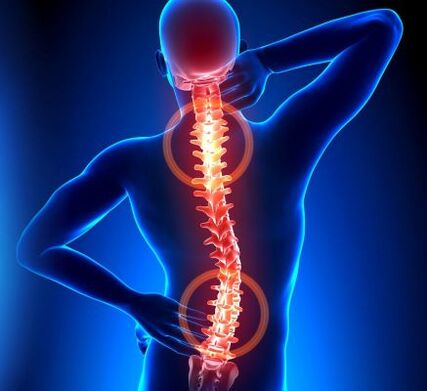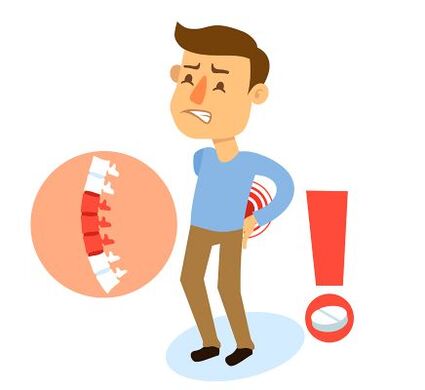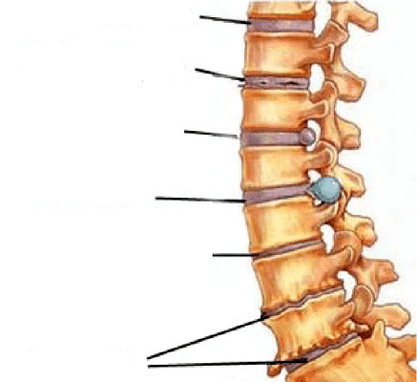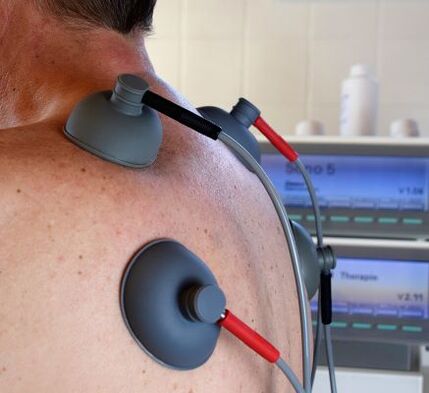Imagine, in the 21st century, 50-80% of the world's population will be diagnosed with osteochondrosis. The numbers are not small, and most importantly, the disease is "getting younger". If earlier the first symptoms did not appear before the age of 35, now the first signs are already diagnosed in adolescents. Most often, a predisposition to osteochondrosis is observed in people with an uneven load on the spine. These can be poor posture, carrying a bag on one shoulder, sitting for a long time in one position, injuries, excessive exercise and, of course, age-related changes.
"Most people have definitely heard of osteochondrosis, but not everyone knows what it is"
What is osteochondrosis?

Osteochondrosis is a pathology of the spine that manifests itself in degenerative damage to the intervertebral discs and the adjacent bone tissue and leads to the obliteration of the vertebral bodies and articular surfaces.
Unfortunately, almost no one goes to the doctor when the first back pain occurs, this means that the disease is already recognized in serious stages. The disease at its early stages is treated very effectively, since changes in the spine are not critical, but over time the process becomes irreversible.
The main sign that you may already develop osteochondrosis is pain in your neck, back, or lower back. In a more advanced form, the pain "radiates" to the chest, arms, shoulders, legs, and other parts of the body.
Depending on the location, osteochondrosis is divided into several types:
- Cervical osteochondrosis.
- Osteochondrosis of the breast.
- Lumbar osteochondrosis.
Symptoms and signs of osteochondrosis
Clinical manifestations arise from damage to the nerve tissue and blood vessels near the affected area.
- Back pain.
- "Lumbago" feeling after physical exertion.
- Poor posture and, as a result, scoliosis.
- Violation of the sensitivity of the skin in certain areas of the body.
- Deafness.
- Dizziness and nausea due to an impaired blood supply.
- A headache.
Osteochondrosis can have a variety of symptoms and signs, which is why it's not always easy to spot at the first signs. Have regular checkups and do not hesitate to see a doctor if you first suspect osteochondrosis.
Causes of Osteochondrosis

There can be many reasons for developing osteochondrosis. As a rule, the lack of respect for the spine leads to this disease, if not at a young age, then certainly by 50.
Think about how you sit every day, how you sleep, whether you have a comfortable pillow and always carry weights in one hand, whether you give the right load when exercising, because all of these can lead to irreversible consequences in your spine. . .
The reasons for the development of osteochondrosis can be:
- Genetic predisposition.
- Nervous exhaustion of the body.
- Bad posture during active growth.
- Wear uncomfortable shoes.
- Wearing heels at a young age.
- Physical overload of the body.
- Obesity.
- Sedentary and sedentary lifestyle.
- Improper weight carrying.
- Frequent lifting of loads.
- Vibration loads on the body.
- Dehydration of the body.
- Hypothermia of the body.
"Be aware that overweight and a lack of exercise can lead to back problems over time! "
In danger:
- Driver.
- Office staff.
- Move.
- Pregnant woman.
- Obese.
- Professional athletes.
Take care of your health and lead a healthy lifestyle.
Developmental stages of osteochondrosis

None of the diseases start suddenly and immediately. Osteochondrosis is no exception. There are 4 main stages in the development of osteochondrosis.
- Primary dystrophic changes in the intervertebral cartilage. Disc dehydration, microcracks, loss of elasticity - all of this is already happening in your spine, while you practically do not feel any changes, but they are still there and you can notice them. If you experience back discomfort or slight pain after physical exertion while sitting for a long time, do not waste time and make an appointment with a doctor.
- Contraction of the intervertebral space and pinching of nerve endings and the appearance of pain in certain areas of the back. The pain syndrome occurs every time with sharp curves and slopes. This stage is hard to miss and certainly not to be ignored.
- Abrasion from intervertebral cartilage tissue. Symptoms of pain are pronounced and can lead to limb numbness. No pain relief is possible without medication. At this stage, serious treatment with adherence to the regime and taking medication is required.
- The last and most serious phase. Osteochondrosis on it is already irreversible, since the intervertebral cartilage is completely destroyed. Surgery is usually required in such cases.
Advanced cases of osteochondrosis can lead to partial or total paralysis. In order not to aggravate the situation, it is necessary to start treatment in a timely manner at the first stages of the development of osteochondrosis.
Treatment of osteochondrosis
The treatment of osteochondrosis of the spine requires an individual approach to each patient. There is no standardized and uniform treatment method. The patient's age, physical condition, causes of osteochondrosis and many other factors are taken into account. But of course, each of the treatments has common features:
Medicines for osteochondrosis

Not only can osteochondrosis be cured by taking medications, but they play a key role in reducing the severity of the symptoms of the disease, improving the processes of blood supply and tissue regeneration. To get rid of the disease completely, it takes an integrated approach and maintaining body condition for the rest of your life. Medicines for osteochondrosis consist of taking several groups of drugs.
- First of all, it is necessary to relieve pain that interferes with a normal lifestyle. For these purposes, NSAIDs are used - nonsteroidal anti-inflammatory drugs. (Ketoprofen, Ibuprofen, Ketorolac).
- After the pain symptoms are eliminated, chondroprotectors and vitamins are prescribed to restore cartilage tissue. Such drugs prevent further destruction of the intervertebral discs and reduce inflammation. These drugs include glucosamine, which, unlike analogues, does not require injection. It is enough to dissolve a sachet of powder in a glass of water and take it orally. This method of administration promotes better absorption of the drug and alleviates the discomfort that occurs during the injections.
- Medicines that stimulate microcirculation in the blood.
- Local analgesics.
Physiotherapy for osteochondrosis

Treatment of osteochondrosis with physiotherapy is a fairly effective measure, and most importantly, it is painless and has practically no contraindications. Such procedures help reduce inflammation, get rid of spasms, and get rid of pinching of nerve endings. Physiotherapy includes procedures such as:
- Electrophoresis.
- Magnetic Therapy.
- Phototherapy.
- Shock wave therapy.
- Mud therapy.
It is important to know that some physical therapy procedures cannot be used during an exacerbation. Treatment of osteochondrosis with physiotherapy is prescribed exclusively by a doctor and in combination with drug treatment.
Physiotherapy and massage for osteochondrosis
Physiotherapy exercises for osteochondrosis help form a muscle corset that supports the diseased spine. The exercise set is selected individually for each patient. For level 3, the exercises are only performed while lying down, smoothly and preferably under supervision.
Treating osteochondrosis with massage is also a common practice. The main thing is that the massage is carried out by a professional who will not harm your spine. After the session, you should feel muscle relaxation, release of clamps, and general relief. Manual massage improves blood circulation. In acute phases of the disease, it is better to refuse this method of treatment.
Treatment of cervical osteochondrosis

With osteochondrosis of the cervical spine, the patient feels severe pain in the head, neck, arms and shoulder girdle. Flickering "flies", tinnitus and spots in front of the eyes may occur. As a rule, at an early stage, the patient goes to the examination of the head and has no idea that things are completely different. With cervical osteochondrosis are prescribed.
- Agnioprotectors against dizziness, which most often occurs in the morning (pentoxifylline).
- Chondroprotectors, which prevent further destruction of the cartilage tissue, reduce inflammation, relieve pain and restore joint mobility (glucosamine, chondroitin sulfate).
- Antidepressants that patients sometimes have to resort to, as constant pain affects the psyche and contributes to the development of insomnia, depression (doxylamine).
- Vitamins that improve the general condition of the body.
- Anticolvusants for headache that affect the patient's full life.
- NSAIDs are prescribed for pain relief in the acute phase.
Treatment of breast osteochondrosis
With thoracic spine osteochondrosis, there is severe pain in the front of the chest, and breathing can become frequent and difficult. Turning and bending can cause severe pain in the shoulder blades area. Diagnosing thoracic osteochondrosis is difficult because the pain is not felt directly in the spine and symptoms are more like diseases of the heart, lungs, or kidneys. Fortunately, this type of osteochondrosis is very rare and, in most cases, the cause of its occurrence is scoliosis.
Treatment of lumbar osteochondrosis
Lumbar osteochondrosis is currently the most common form. This is because it is precisely this part of the spine that is the most stressed. At first there is a dull pain in the lumbar area, then the pain begins to radiate to the leg and can lead to numbness of the lower extremities. Flexion and extension problems arise. In such cases, it is important to start the treatment of lumbar osteochondrosis in a timely manner and apply complex measures. Several rules should be followed:
- Limit physical activity.
- Take all prescribed medications.
- Have prescribed physical therapy.
- Take part in special massages.
- Get rid of excess weight if necessary.
In the event of improper treatment and failure to follow the recommendations, surgery on the last lumbar osteochondrosis may be necessary.
Which doctor treats osteochondrosis?
If you experience pain in the spine and suspect osteochondrosis, you should first make an appointment with a therapist who will send you to a neurologist, vertebrologist, orthopedic surgeon and surgeon for an examination based on your symptoms.
How long is osteochondrosis treated?
Many patients are interested in how long treatment for osteochondrosis will take. No one will give you an exact answer, but the main symptoms of the disease usually go away within 1-3 months, further maintenance of the condition is required.
Is it possible to get rid of osteochondrosis forever?
It all depends on what stage it was discovered at. If the patient turns in 1-2 stages, then with proper treatment and observance of all the rules, you can get rid of osteochondrosis forever. Unfortunately, at later stages it will not be possible to completely get rid of the disease.
Orthopedic pillow
You may need an orthopedic pillow if you have been diagnosed with cervical osteochondrosis. This pillow improves the quality of your sleep and does not deform your spine any further. You can turn to a dedicated store where consultants will show you all the options for pillows and advise you on prices.

































